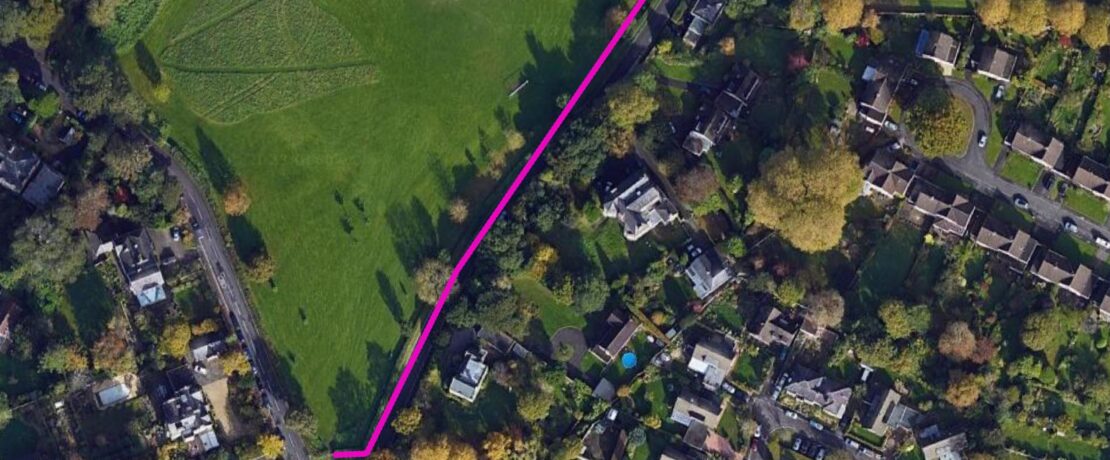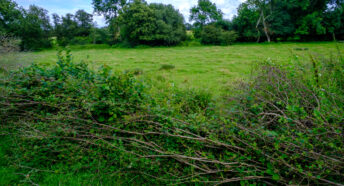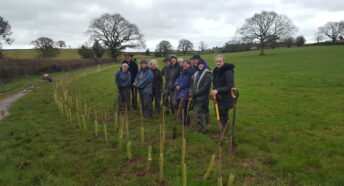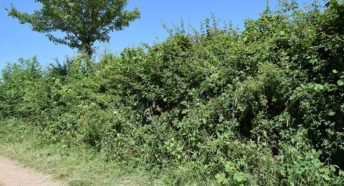Hedgerow Heroes in Weston Park
Archery Field in Weston Park has undergone a transformation
Our team at Hedgerow Heroes worked to lay hedges and restore 65 meters of park boundary in Weston Park, Bath. Thanks to Bath and Northeast Somerset Councils on going commitment to nature recovery. We were able to work closely with council’s park department to revamp the Archery Field hedge system.
Why Archery Field?
The hedgerows at Archery Field are at a stage in their life cycle where they would benefit from hedge-laying to restore their natural heritage. Current surveys sadly indicate that the hedges at Archery Field have lost the vigour and diversity that they once enjoyed. This in turn has reduced the opportunity for wildlife to flourish. Restoring a hedgerow is a natural stage in the lifecycle of a hedge and the council is grateful for the support of the CPRE Hedgerow Heroes project in helping to make this happen.
How do hedgerows support wildlife?
A healthy flourishing hedge provides a cosy home for a wide range of mammals, birds, and invertebrates. Hedges provide these animals with warmth and shelter, and act like corridors of safety by allowing them to hide from predation and the elements. Native hedgerows also produce a rich sources of food like nuts, berries, and nectar which support a huge range of species. Without flourishing hedgerows creatures like hedgehogs and field mice would be struggling for survival and we don’t want that to happen!
How did we restore the hedge at Archery Fields?
One of our biggest commitments for Hedgerow Heroes in Bath this Winter was the hedge restoration work at Archery Field in Weston Village, owned and managed by Bath and NorthEast Somerset Council (BANES). After agreeing and identifying an action plan with the Council Team, we set about informing the local community about the importance of the restoration and recruiting willing team to help.
Led by a professional hedge- layer- Mike Reed, the Parks Department, CPRE volunteers and team kicked off the project on the 27th of October. The Parks Department Team then continued the work in the New Year. We are proud to say the work was undertaken using traditional hand tools!
We used the traditional method of Hedge laying to restore the Archery Field hedgerows. Hedge laying it is a forgotten element of our countryside heritage, the skill has passed down through the generations for hundreds of years, we love that we can bring back to our parks and boundaries! The work was undertaken this autumn and winter, as it is best to work on hedgerows whilst the undergrowth is dormant.
The hedge was in need of some serious restoration. Vigorous bramble and ivy coupled with poor growth had created a decline in hedge health and biodiversity value. The Council had earmarked the hedge for laying, and after surveying the
hedge, the Hedgerow Heroes team agreed to undertake the work and began recruiting a team of volunteers to help. We held hedgerow awareness days in October, including a walk led by local wildlife expert Steve England, and a tool
sharpening course led by Beth Tilston. Both took place on location.
The restoration commenced in late October with a hedgelaying training day – led by Somerset based hedgelaying expert Mike Reed. The local volunteers learned to use traditional tools- billhook and axe, implementing newly acquired skills to cut into the living wood at the base of the hedge until they could lay the stem at a 45-degree angle. Once a stem is ‘laid’ it is termed a ‘splasher’- a local Somerset hedgelaying
term. Each region of the country has a unique style of hedgelaying and associated terminology.
Hedgelaying is part of a rich vein of the British countryside cultural heritage which Hedgerow Heroes aims to share and promote with new audiences. Working in this way, the volunteers were able to lay each stem and pin it in position with hazel stakes cut from a nearby coppice. Forming a sturdy boundary of equal height and matching angle of ‘splasher’, we created a pleasing hedgerow pattern. Hedgelaying has great value for wildlife as it encourages dense regrowth and improved connectivity of habitat.
As this hedge showed signs of ash die back and diseased wood, we needed to remove wood and introduce new native hedge species as ‘whips’ -1-year-old plants, to fill out the hedge. In time this restoration will improve the biodiversity value of the hedge, supporting invertebrates, mammals and birds, with food, shelter and homes, while connecting the park with the wider landscape. Thus, providing an integrated corridor for wildlife movement.
We would like to give a special thank you to the 57 volunteers who joined us across the 9 days of activity at Archery Field. Thank you also to local Councillors and BANES Council team who visited and supported the project and promoted volunteer opportunities. In total we were able to deliver two hedgelaying courses, one tool sharpening course, and managed to lay 200 metres of hedge, with a further 114 metres of hedge gapped up.
Get involved
If you would like to get involved in future hedgelaying days please see our Volunteering Page.
Want to know more?
If you want to learn more about hedge laying and expert hedge layer Mike Reed check out the below video.






